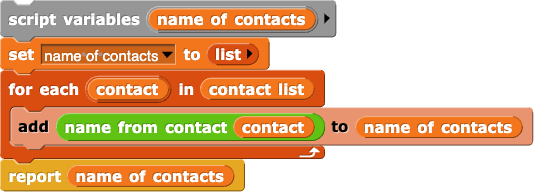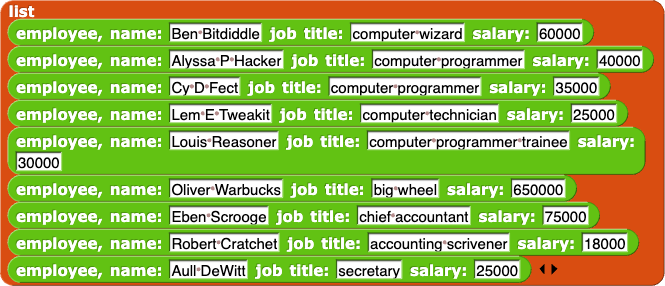 reports the list {r, 5, b, i, 3, k, 2, 3, t, 6}.
reports the list {r, 5, b, i, 3, k, 2, 3, t, 6}.
initials from name block that accepts one contact as input and reports that person's initials.
 block to break up the contact's full name into a list of their names, and then I joined the first letter of each name:
block to break up the contact's full name into a list of their names, and then I joined the first letter of each name: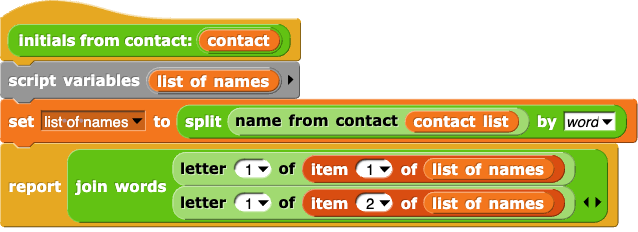
Try it! (Each brown dot represents a space.)


In one case, split is focusing on the exact characters in the string. In the other case, it's giving you what you really want: the words in the contact's name. At a low level of abstraction, text is made of characters and you look through each of the characters. But at a higher level of abstraction (such as when you are reading), text is made up of words. Snap! lets you think at this higher level of abstraction.
letter (1) of (item (3) of (list of names)). letter (1) of each item in the list of names. That sounds as if what we need is a higher-order function. Higher-order functions are good at doing things with individual items in a list.A higher-order function is a function that takes a function as input (or reports a function as output).



 block takes two inputs: a function (a reporter with a blank input slot) and a list, and it reports a new list in which each item is the result of calling the function with an item from the original list as input. For example:
block takes two inputs: a function (a reporter with a blank input slot) and a list, and it reports a new list in which each item is the result of calling the function with an item from the original list as input. For example:






-reporting.png)


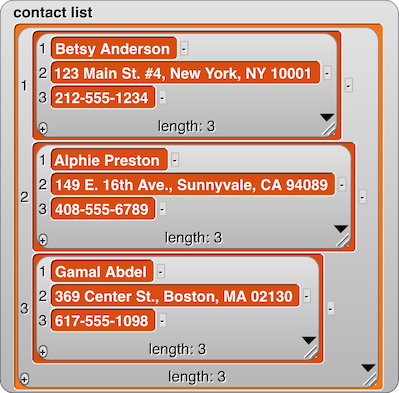
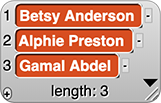


 reports the list {rabbit}.
reports the list {rabbit}.


 reports the list {Augusta, Boise, Columbia, Des Moines}.
reports the list {Augusta, Boise, Columbia, Des Moines}.
 reports the list {A, B, C, D}.
reports the list {A, B, C, D}.
 reports the list {Maine, Idaho, South Carolina, Iowa}.
reports the list {Maine, Idaho, South Carolina, Iowa}.
